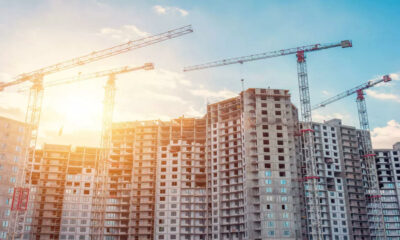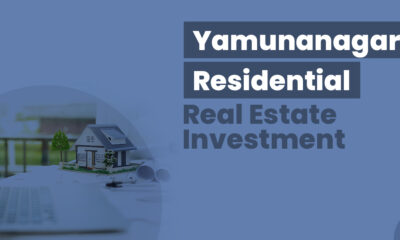News
Wireless EV charging: the future technology


Source:https://www.energybite.co.in/blog-post/wireless-ev-charging-the-future-technology/
Range anxiety, the biggest deterrent to mass adoption of electrical vehicles, can be taken care of by wireless charging. A technology of the future, it even allows the EV user to charge the vehicle when he/she is travelling in a remote city or some far-flung highway. As more and more people make a switchover to EV, wireless charging is set to take over the market. And it is sure to happen in not-too-distant a future.
The world is moving towards electric vehicles to curb the adverse effects caused by non-renewable fossil fuel-based vehicles. A switch towards greener modes of transport is necessitated to rectify various issues arising out of environmental degradation and to improve the air quality index. Being no less conscious of the prevailing scenario, India, too, is adopting e-mobility, albeit slowly.
Though EVs have many advantages for the environment and they also provide monetary benefits to consumers, their sales are not picking up at a fast pace in India. This is mainly due to the range anxiety of consumers and inadequate charging infrastructure in the country. The two are interrelated and the EV charging process needs to improve to take care of the range anxiety. What the consumer is looking for is a system that gives maximum range in minimum time duration, and in a hassle-free manner.
- Though EVs have many advantages for the environment and they also provide monetary benefits to consumers, their sales are not picking up at a fast pace in India.
- The wireless charging works by transferring energy between a pad on the ground and a pad under the floor of a compatible EV through resonant magnetic induction.
- In the static wireless charging system, the EV needs to be in a static position. The charging stops if both the pads are not aligned or if there is an obstruction between the transmitter and the receiver. Dynamic charging eliminates the need for carrying big batteries on the EVs for increased range. That way, it helps in reducing the weight of the vehicle and increasing its overall efficiency as well.
Wireless charging is an answer to this. It provides ease of using EVs by taking care of range anxiety of the consumers. The wireless charging works by transferring energy between a pad on the ground and a pad under the floor of a compatible EV through resonant magnetic induction. A consumer can charge the EV simply by aligning these pads. These chargers can charge at the speed of 3.3 kW, 6.6 kW and 20 kW.
Wireless charging systems are of two types: static and dynamic. In the static wireless charging system, the EV needs to be in a static position to commence charging. The charging stops if both the pads are not aligned or if there is an obstruction between the transmitter on the ground and the receiver on the EV.
In dynamic wireless charging system, the charging is done in a moving vehicle by an energy transmitter, which is static on the ground. This type of charging is, obviously, of great help to the consumers while they are travelling in cities or on highways. They can charge their EV without stopping, thereby saving precious time. It also eliminates the need for carrying big batteries on the EVs for increased range. That way, it helps in reducing the weight of the vehicle and increasing its overall efficiency as well.
Based on the operating techniques, EV wireless charging systems are classified into four types:
- Capacitive Wireless Charging System (CWCS) in which coupling capacitors are used to transmit energy from transmitter to receiver.
- Permanent Magnet Gear Wireless Charging System (PMWC) consists of armature winding and synchronised permanent magnets inside the winding. When AC supply is given to the transmitter, it induces mechanical torque in the transmitter magnet which in turn rotates the receiver magnet through the magnetic field.
- Inductive Wireless Charging System (IWC) is based on Faraday’s Law of Induction. In this, wireless charging is done by mutual induction of magnetic field between transmitter and receiver coil. Operating frequency is between 19-50 KHz.
- Resonant Inductive Wireless Charging System (RIWC) High Quality Factor (QF) resonators are used in this system to transmit energy from transmitter to receiver at a higher rate than in the IWC. The same amount of power can be transmitted long distances even with weak magnetic fields. The operating frequency is between 10-150 KHz.
Wireless charging is, undoubtedly, the technology of the future and it is set to take over the market once more and more people make a switch towards electric vehicles. Time is not far!
-



 News4 weeks ago
News4 weeks agoKW Delhi 6 Mall Onboards New Brands
-



 News4 weeks ago
News4 weeks agoManasum Senior Living Launches IKIGAI GOA, A Senior Living Community in North Goa, in collaboration with Prescon Homes
-



 News4 weeks ago
News4 weeks agoBridging India Divide: Top 5 Tier- 2 Cities to Focus On
-



 News4 weeks ago
News4 weeks agoCommercial Realty Gets Tech Savvy: Fast Construction, Enhanced Convenience
-



 News3 weeks ago
News3 weeks agoGodrej Properties Sells Rs 3k cr+ Homes of Godrej Zenith, Gurugram, within 3 days
-



 News4 weeks ago
News4 weeks agoMultipoint Connection – A Definite Boon
-



 News3 weeks ago
News3 weeks agoRBI’s Status Quo on Key Policy Rates to Help Maintain the Real Estate Growth Momentum, Say Industry Stalwarts
-



 News1 week ago
News1 week agoOlive Announces Dhruv Kalro as Co-Founder





























